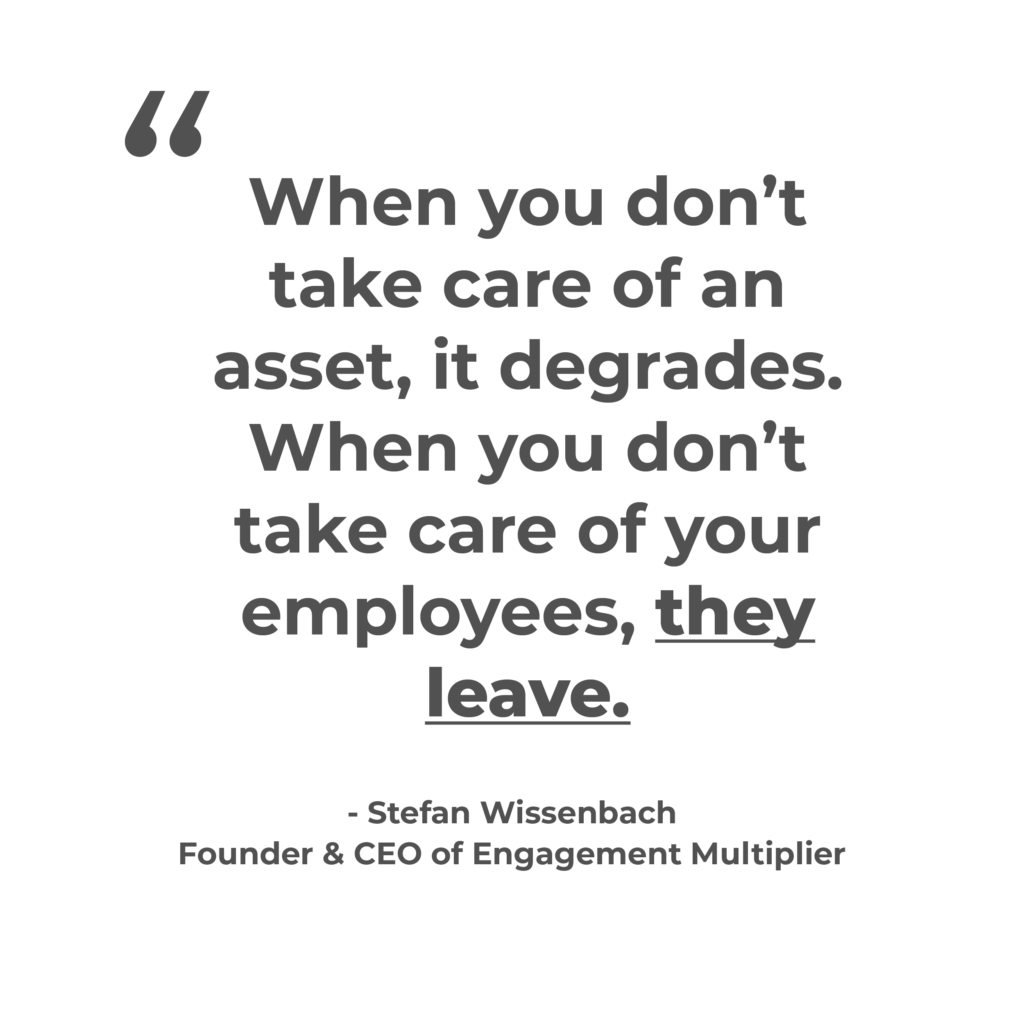Somewhere along the way, many executives unwittingly gave up something important.
They delegated the responsibility for their organisation’s most valuable asset – their human capital.
How did this happen and why? There are a few reasons.
Growth: Fast-growing organisations are some of the most difficult to manage. Onboarding employees and continuing to successfully grow at scale is devilishly hard. Add to that remit the necessity of innovation, and leaders in growth mode find themselves feeling like they’re juggling Grandmother’s china whilst learning to ride a unicycle – downhill. They don’t have time for everything, and they become enchanted by the idea of…
Efficiency: Is there a more alluring siren’s song for executives than efficiency? The idea of doing more with less, optimising, maximising, and holding the line on spending – it sounds great. And it is great, until it’s not, which is what happens when cost-saving becomes the overriding goal, and your people are reduced to numbers, which can be very efficiently measured using…
Software: This will sound funny coming from the founder of a SaaS company, but at some point, HR software became the home of “human capital management” (aka “HCM.”) Certainly, some aspects of managing humans, time, payroll, time off, etc. lend themselves beautifully to a software platform. But the “capital” aspect, that’s a different story.
The most valuable capital is human capital
Before we dive in, let’s take a look at the concept of human capital, which can be described as the skills, training, expertise, experience, education, knowledge, relationships, and competencies that the humans you employ contribute to your business.
When you think about the people within your organisation as a valuable capital asset, as opposed to a resource to be managed, your mindset shifts. The former is something that confers value and competitive advantage. The latter hints at cost centers.
You undoubtedly have a strategy for managing your business’s capital assets. Equipment is maintained and upgraded, and new equipment is evaluated and acquired. Your facilities are inspected, evaluated, cared for, and expanded. Point is, you likely spend a fair amount of time and energy on the strategies for maximising the investments your firm has made in its capital assets.
Can you say the same about your firm’s human capital?
Your human capital strategy should not be an afterthought. It is the very foundation upon which future growth will be built, and it should be aligned with your business strategy, laying track in front of your business engine, and creating a runway for the organisation to take flight!
When did we de-prioritise human capital?
“For years now, human-resource leaders have found themselves on a cost-efficiency treadmill that applies analytics and big data to existing HR operating models. Their departments have lived by a worthy but uninspiring mandate: to optimize labor costs, reinforce compliance using standardized measures, and support the adoption of technology beyond IT…For chief human-resource officers (CHROs), the question has now become whether processes have replaced the creativity and innovation they need to attract and develop talent, manage and reward performance, and optimize workforce strategy.”
This is an excerpt from the opening paragraph of a McKinsey article arguing that it’s time to focus HR efforts on people again, instead of processes aimed at cutting costs. I’m quite in agreement, however, I would also ask the same questions of the executive suite, not just the CHRO.
Because the engagement of the workforce – or, put another way, the utilisation of that most precious asset, human capital – should be on the agenda of every leadership team and for that matter, every board.
Employee engagement is a business-critical issue that will make or break a business. As it has gained visibility, it’s also become the domain of HR and various HRIS or HCM systems, delegated to HR to manage. Certainly, HR can and should be a partner in carrying a human capital strategy forward.
But setting that strategy, and owning accountability for the health of that vital asset, the engagement of the organisation’s employees, must be the domain of the executive team. However, many companies are allowing something that is about business transformation and growth to be commoditised and run by software.
I’ve long held the belief that employee engagement should be a board-level concern. Put another way, an organisation that doesn’t care about its employees is squandering one of its most valuable assets. When you don’t take care of an asset, it degrades. When you don’t take care of your employees, they leave.
When leadership is involved, people are accountable. Change happens. Issues are resolved. However, if no one is accountable, and if the organisation has developed a culture that allows people to kick the can down the road, well, don’t be surprised at the knock-on effects.
People will leave.
Productivity will diminish.
Enthusiasm will flee, and taking with it the joy of innovation.
And then one day, you’ll see it in the top line. And when it shows up there, it’s too late.
However, you can prevent all of this and more, using one of the swiftest and surest ways to unlock your company’s potential and catalyse growth: listening to your people, identifying and knocking out the myriad things that are holding them back, consuming their attention, sapping their energy, and keeping them from doing their best and most personally satisfying work. Employee engagement is business-critical, and the strategy belongs in the executive suite.



